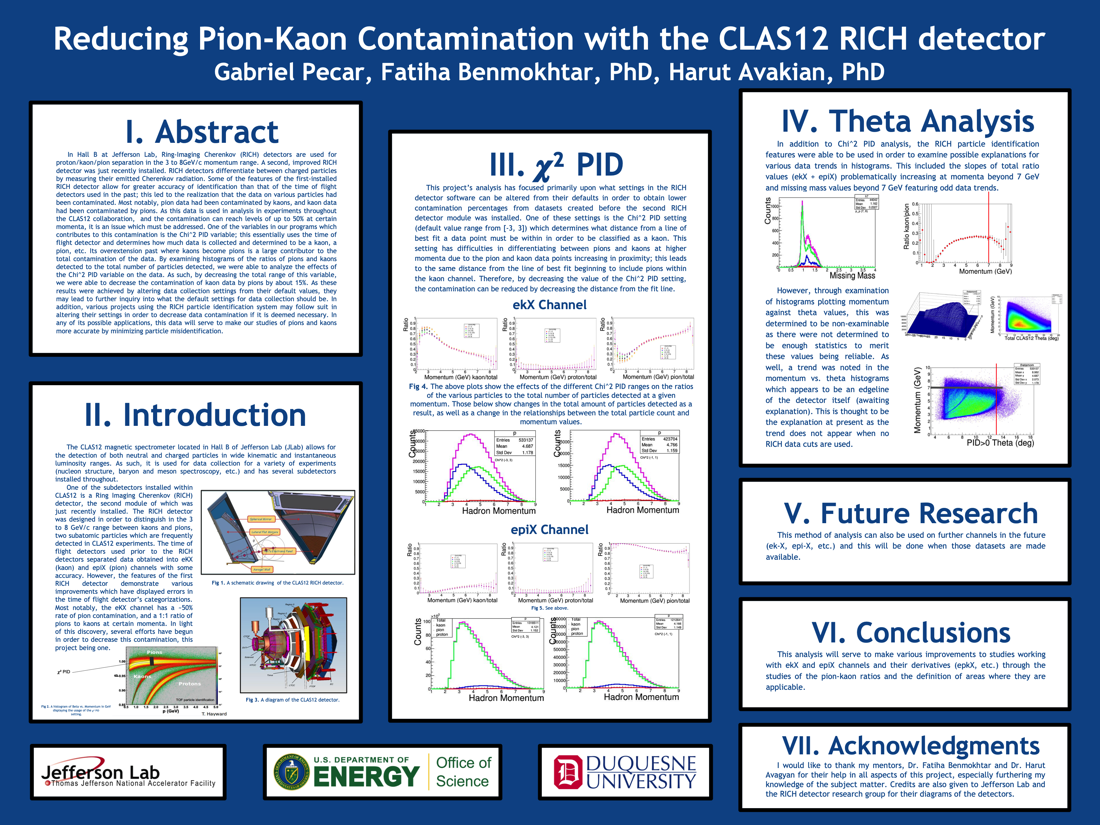Undergraduate Research at Jefferson Lab
RICH Data Analysis to Minimize Pion-Kaon Contamination
Student: Gabriel Pecar
School: Duquesne University
Mentored By: Harut Avagyan and Fatiha Benmokhtar
In Hall B at Jefferson Lab, Ring-Imaging Cherenkov (RICH) detectors are used for proton/kaon/pion separation in the 3 to 8GeV/c momentum range. A second, improved RICH detector was just recently installed. RICH detectors differentiate between charged particles by measuring their emitted Cherenkov radiation. Some of the features of the first-installed RICH detector allow for greater accuracy of identification than that of the time of flight detectors used in the past; this led to the realization that the data on various particles had been contaminated. Most notably, pion data had been contaminated by kaons, and kaon data had been contaminated by pions. As this data is used in analysis in experiments throughout the CLAS12 collaboration, and the contamination can reach levels of up to 50% at certain momenta, it is an issue which must be addressed. One of the variables in our programs which contributes to this contamination is the Chi^2 PID variable; this essentially uses the time of flight detector and determines how much data is collected and determined to be a kaon, a pion, etc. Its overextension past where kaons become pions is a large contributor to the total contamination of the data. By examining histograms of the ratios of pions and kaons detected to the total number of particles detected, we were able to analyze the effects of the Chi^2 PID variable on the data. As such, by decreasing the total range of this variable, we were able to decrease the contamination of kaon data by pions by about 15%. As these results were achieved by altering data collection settings from their default values, they may lead to further inquiry into what the default settings for data collection should be. In addition, various projects using the RICH particle identification system may follow suit in altering their settings in order to decrease data contamination if it is deemed necessary. In any of its possible applications, this data will serve to make our studies of pions and kaons more accurate by minimizing particle misidentification.
[Watch the presentation on YouTube]

Citation and linking information
For questions about this page, please contact Education Web Administrator.
